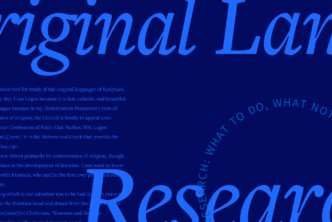One likely date for the crucifixion of Jesus is Friday, April 6, AD 30. If we assume this chronology, we can tentatively reconstruct Jesus’ movements for the first part of his final week, including his cursing of the fig tree and its subsequent withering.
Sunday, April 1: Jesus enters Jerusalem on a colt and then returns to Bethany with the Twelve (Mark 11:1-11).
Monday, April 2: While returning to Jerusalem, “Jesus was hungry. Seeing in the distance a fig tree in leaf, he went to see whether perhaps he would find fruit on it. When he reached it, he found nothing but leaves, because it was not the season for figs. Then he said to the tree in reply, ‘May no one ever eat fruit from you again.’ His disciples heard him say this” (Mark 11:12–14). Then followed the cleansing of the temple and a return to Bethany (Mark 11:15–19).
Tuesday, April 3: As the disciples walked back to Jerusalem, they were amazed that the fig tree had completely withered so quickly (Matt 21:20; Mark 11:20–21). This prompted Jesus to teach them about the potency of faith in prayer (Mark 11:22–25).
In the life of a Palestinian fig tree, leaves appear in late March along with small knobs (called taqsh) that anticipate the real figs that arrive about six weeks later in early May. If there are leaves without these knobs (“nothing but leaves”), this is a sure sign the tree would be fruitless and was virtually dead. So the curse Jesus pronounced on the tree simply confirmed what was inevitable. It is certainly not the case that Jesus arbitrarily cursed a healthy tree in frustration at not finding fruit on it to satisfy his pressing hunger!
We should see Jesus’ action as an acted parable, with the withered fig tree a symbol of the unresponsiveness of Jerusalem and Israel as a whole to the presence and message of God’s Messiah. It was precisely because Jerusalem “did not recognize the time of God’s coming” that Jesus wept over the city and predicted its violent downfall (Luke 19:41–44).
This acted parable matches Jesus’ spoken parable about the fruitless fig tree recorded in Luke 13:6–9. A property owner visited his vineyard three years in succession hoping to find fruit on his fig tree, only to be frustrated on each occasion. So he directed his vinedresser to cut the tree down because it was wasting valuable space. The message of this parable, and the acted parable during Jesus’ final week, is that judgment follows unproductivity.

***
From Murray J. Harris, Navigating Tough Texts: A Guide to Problem Passages in the New Testament (Lexham Press, 2020).
This article was originally published in the January/February 2022 issue of Bible Study Magazine. Slight adjustments, such as title and subheadings, may be the addition of an editor.
Related articles
- The Parables of Jesus: Revealing the Secrets of God’s Kingdom
- Parables: How They Work and Why Jesus Used Them (Video)
- I Want to Be Like Mark
Related resources





